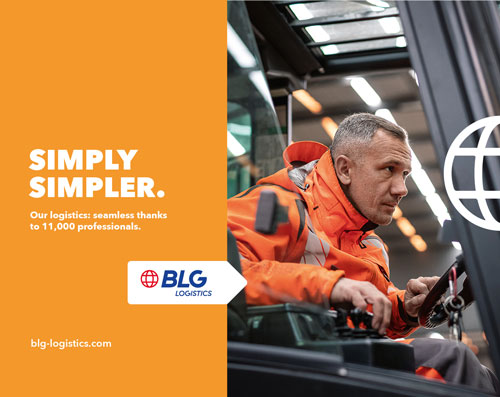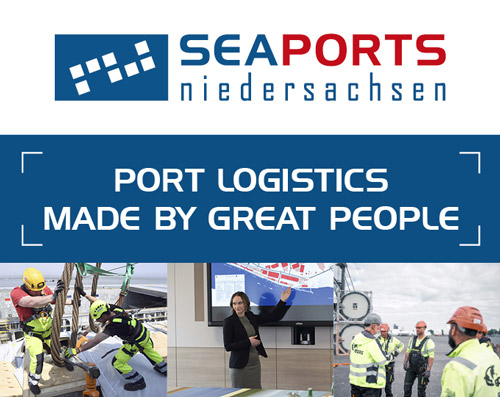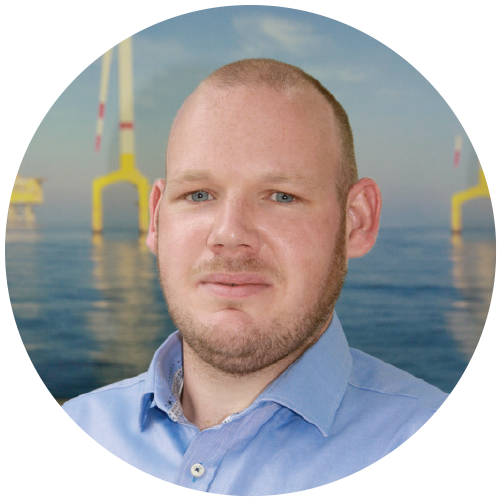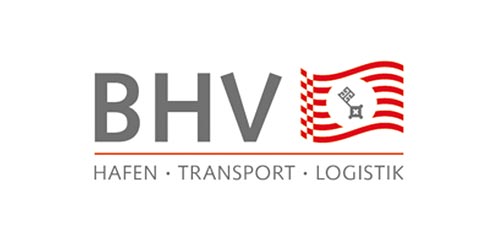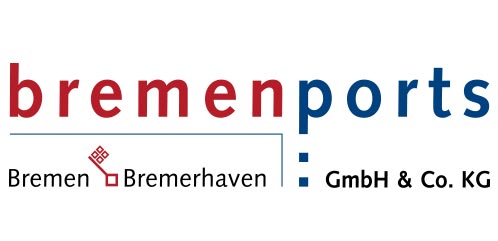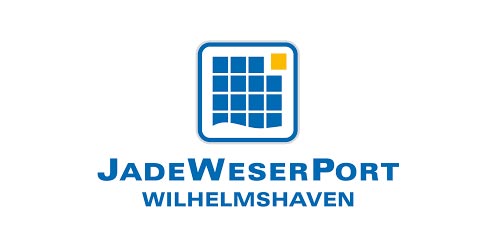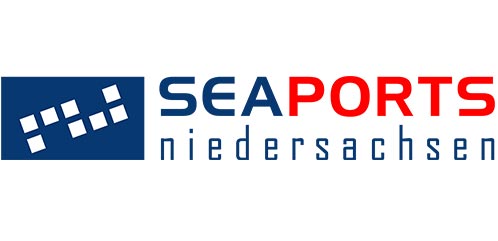EMS Maritime Offshore is considered to be a German pioneer in transferring people to offshore wind turbines and has its own fleet of service vessels for its activities in the North Sea and Baltic Sea. In addition to offering port services, the company is also in charge of maritime coordination on the high seas and provides wind farm operators with a variety of service packages.
Credits: EMS Maritime Offshore
But all that has very humble beginnings. “We at AG EMS began looking at offshore wind turbines in 2002,” reports Marcel Diekmann, one of the EMO managing directors. It started out as more of a theoretical conversation. But when the industry, which was still young at that time, began to take off, the company decided to create a small department and purchase two ships – two former rescue cruisers of the German Maritime Search and Rescue Service (DGzR).
“We used those to ferry technicians to wind farm construction sites like ‘Alpha Ventus’ and ‘Bard Offshore 1’ for the day,” recalls the managing director.
At that time, there were no dedicated standards for crew transfer vessels (CTVs). But the rescue cruisers were very seaworthy – an important requirement for use on the high seas. Converted fishing trawlers offer something similar, which is why many of them have spent their second life in the oil and gas industry and installing cables and pipelines out at sea as so-called traffic control ships.
“When the market began growing, we joined up with a Dutch partner and converted and commissioned two of these ships – the ‘Osprey’ and the ‘Eagle’ – for use at offshore wind farms,” says Diekmann. As this line of business no longer had anything to do with AG EMS’s ferry business, the company founded EMS Maritime Offshore, initially with three employees, though they were soon joined by others.
What developed well at the beginning was soon hampered by the then German government and, more specifically, Federal Minister for the Environment Peter Altmaier (CDU), when support in line with the Renewable Energy Sources Act (EEG) was, in effect, slashed. “Since the company foundation, we’d expanded our fleet to include six CTVs and three traffic control ships,” recalls managing director Jan Heyenga. “Due to the collapse in the market and changing ship designs, we ultimately decided to get rid of five ships.”
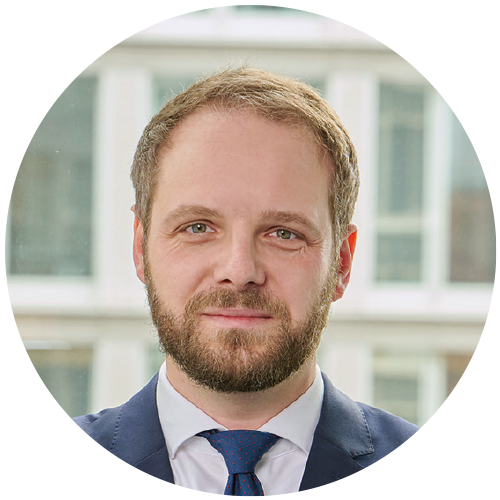
EMS Maritime Offshore
Ambitious expansion aims increase the demand for service vessels
But that is ancient history. When the Offshore Wind Energy Act (WindSeeG) went into effect in January of this year, Germany’s expansion aims were there for all to see. The plan is to increase the installed capacity of offshore wind energy to at least 30 gigawatts by the year 2030, at least 40 gigawatts by 2035 and at least 70 gigawatts by 2045. It is clear to see that the demand for CTVs will increase accordingly.
Even technologically speaking, this marks a new era that dawned six months ago at EMO when the company christened its first CTV with hybrid drive, “Windea One”. This CTV is truly unique, as its energy storage system, (ESS) can cover roughly 20 per cent of its energy requirements. The drive system comprises four drivetrains, which are operated with diesel alone, with a combination of electricity and diesel, and with electricity and ESS with permanent magnet motors (PMMs). With potential offshore charging stations at the wind farms, the hybrid drive could one day provide up to 80 per cent of the energy required.
Besides “Windea One”, the company is serving the growing market with three more of its own CTVs – “Windea Three”, “Windea Four” and “Windea Six” – as well as several chartered ships. A majority of our competitors are based in Norway, Denmark and the UK, which comes with its own set of challenges. “Quality and safety standards vary internationally, though we’re proud of the fact that our ships that sail under the German flag fulfil very high standards. These standards can be different in other European regions, including the UK,” explains Diekmann.
But the market is also demanding in other ways during this economic boom. “Advancements in drive technology are occurring so quickly that ships are outdated before they’re even paid off,” explains Diekmann. And even though the managing director generally considers the battery technology to be a key component of the main drive in CTVs, their weight is still too high for the required performance. EMO is therefore going to wait before making any more investments. “But wind farm operators are just now getting started with new tenders,” says Diekmann.
Facts
EMS Maritime Offshore
Established: 2010
Area(s) of business: Maritime services, port and logistics services, and technical and engineering services
Headquarters: Emden
Branches: Eemshaven and Mukran
Assets: our of its own CTVs, buildings and warehouse space at various ports
Employees: 90, including 33 sailors
The ship design needs to reflect the application
It will be quite difficult to expand internationally into new markets such as the American East and West Coasts, where wind turbines will need to be installed on the floating foundations of the future due to the sheer depths of the water. The EMO fleet is optimised for use at existing offshore wind farms in the North Sea and Baltic Sea and especially for the operating phase. “Depending on conditions such as wavelength, you may need CTVs with a different design,” says Heyenga.
For that reason too, smaller and older ships could sail to older wind farms and ones located closer to the coast in Germany, whilst more modern, larger and more weather-resistant vessels could sail to the newer farms further out at sea. Logistics have also changed. For example, modern CTVs, which can safely transfer people to wind turbines even in rougher seas, now serve offshore wind farms 24 hours a day, which poses different challenges in terms of ship design and drive technology.
Apart from managing its own and chartered CTVs as a certified shipping company, EMO offers maritime coordination services for the “Trianel” and “Iberdrola” wind farms. Much like at a traffic control centre, the employers here are responsible for marine surveillance using automatic identification system (AIS) and radar data as well as camera images. The third pillar is comprehensive port services at a variety of service ports near the wind farm clusters. These include offices, warehouses and outdoor storage capacities as well as the provision of berths for service vessels and agency services, such as those for GE Renewable Energy and Siemens at Eemshaven, where EMO operates a helicopter and drone port.
As much of the energy of the future will be generated at sea, EMO plans to offer tailored service solutions alone and in packages as well as coordinate the full range of logistics services at the interface between wind farm, shipping company and port. This is just one of the many reasons the managing directors are optimistic about the future. Heyenga: “The future is bright.” (cb)

